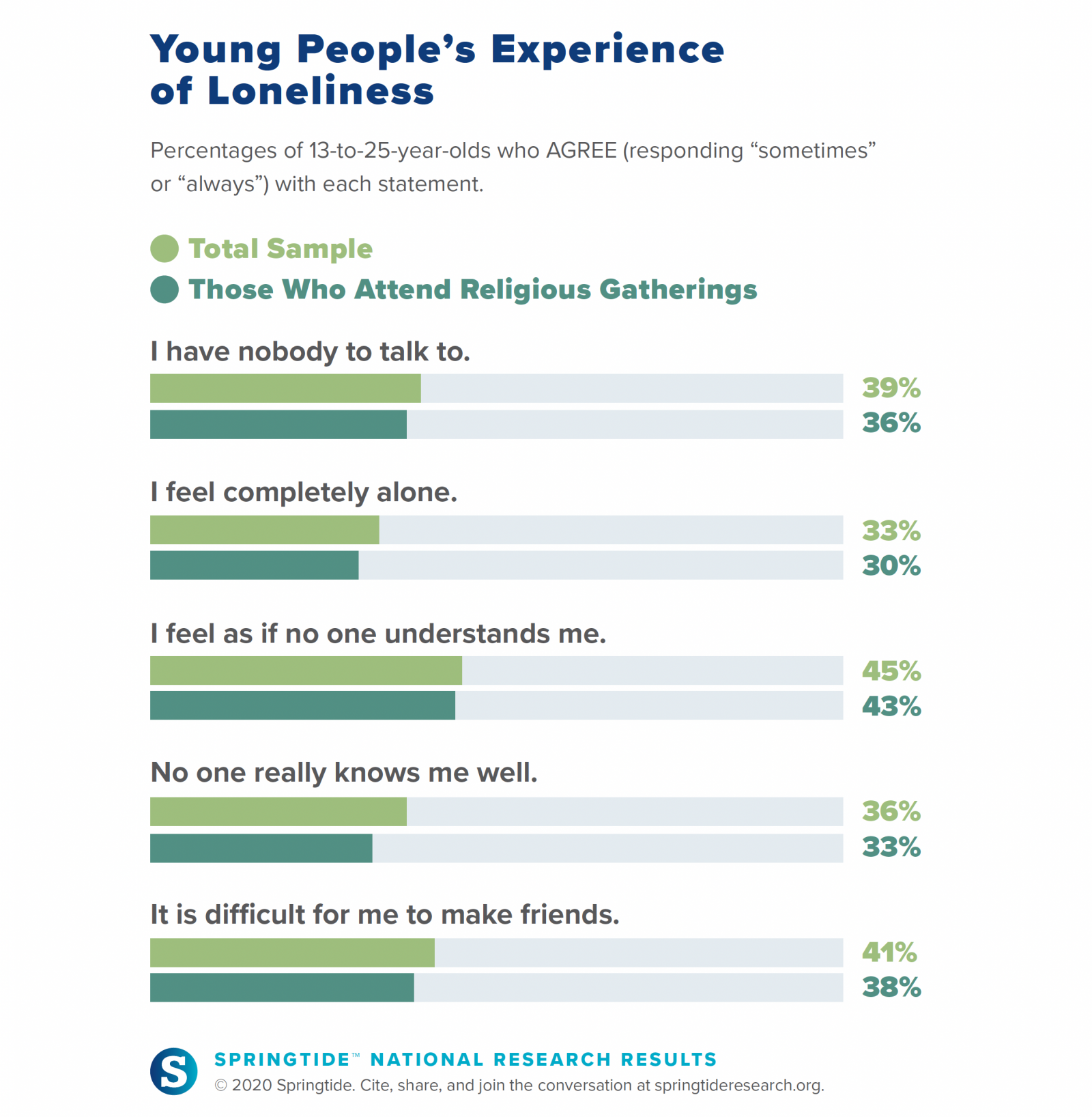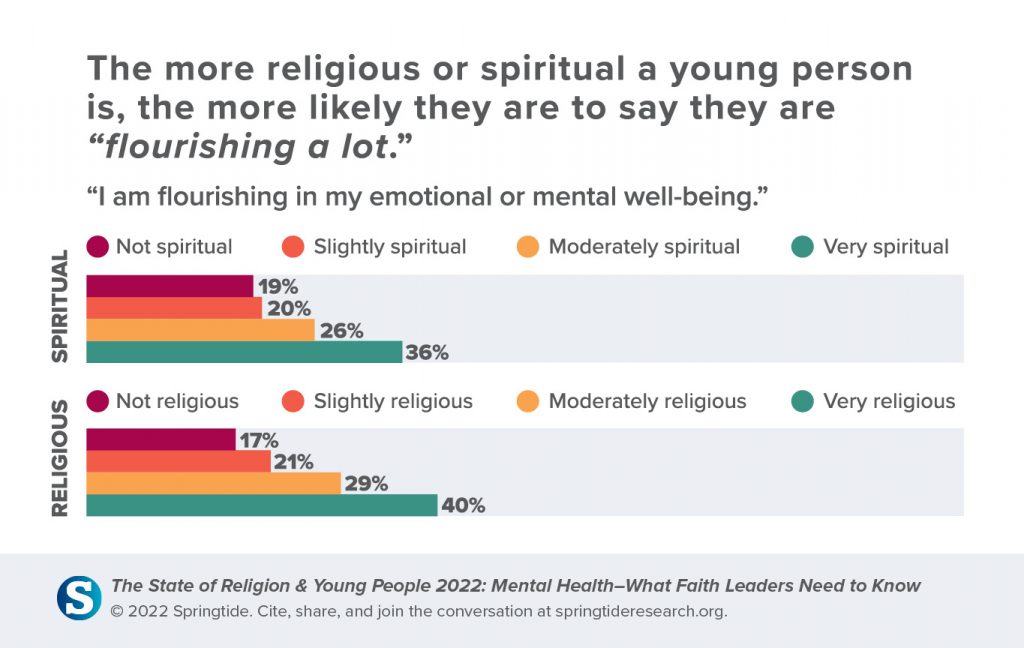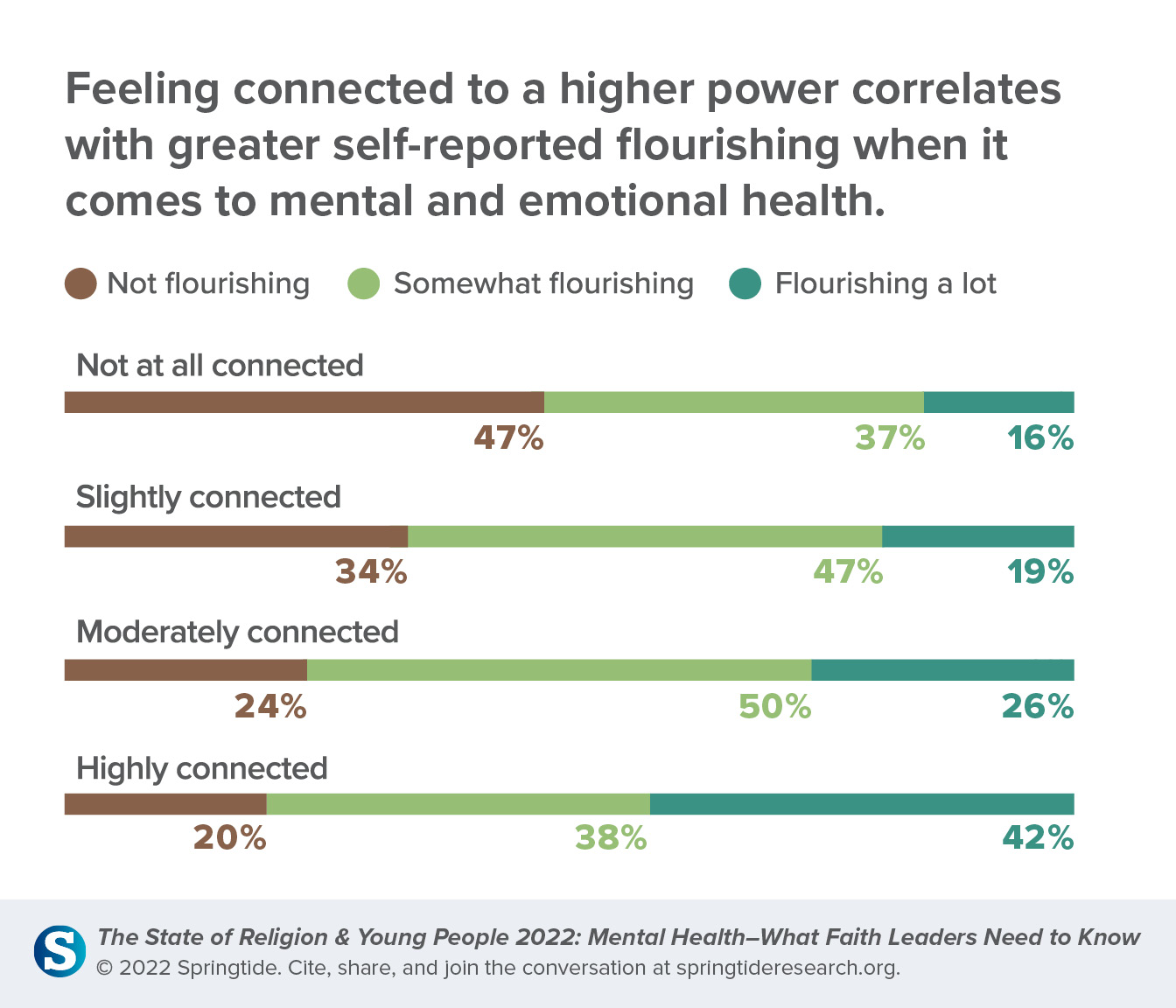
Lonely? Religion and spirituality can help.
In Belonging: Reconnecting America’s Loneliest Generation, our 2020 report that contains responses and reflections from more than 1,000 young people ages 13–25, the findings from prior studies were confirmed: Young people are indeed lonely, perhaps at rates unforeseen by previous generations.
For this report, loneliness was defined as “a persistent state of being in which a person feels isolated, unsupported, and without close friends.” Social isolation is closely related, as it is the state of having no or little contact with societal organizations or groups. Loneliness and social isolation commonly go together but aren’t always connected in an individual’s experience.

Religious institutions have historically been regarded as sources of connection, yet this graph shows very little difference between the total population and young people who participate in religious groups. Simply joining or attending religious groups shows minimal protective effect against experiencing loneliness. Over 37% of young people who attend religious groups still say that they have no one they can talk to. Over one in ten (12%) young people who attend religious gatherings say they feel left out all the time. Membership in religious or spiritual groups alone is not always enough to stave off the loneliness and social isolation young people are experiencing.
In later surveys, our data confirm that while simply belonging to or attending a religious or spiritual community may not be enough to keep loneliness at bay, engaging with religion and spirituality can decrease feelings of loneliness and isolation and positively impact mental health. In our State of Religion & Young People 2022: Mental Health—What Faith Leaders Need to Know report, nearly 10,000 young people answered survey questions about their beliefs, practices, behaviors, relationships, and mental health. More than half agreed that religion and spirituality matters for their mental health and that religious and spiritual practice positively impacts their mental health.
Some specifics:
Data show that the more religious or spiritual a person is, the more likely they are to say they’re flourishing.

Feeling connected to a higher power correlates with greater self-reported flourishing when it comes to mental and emotional health.

But how is it that participating in a faith community doesn’t always mitigate loneliness, but engaging with religion and spirituality in other ways can and often does impact mental health positively? The data show that it boils down to a sense of connection. One can join a faith community or be a member for several years and still not have meaningful connections with others or to a higher power. It’s when those feelings of connection are established that religion and spirituality, in all its forms, seems to serve as a powerful antidote to mental-health challenges.
Young people find connection at school, home, or work—and as we note in our 2022 report, it is helpful if they find it within religious spaces as well. In fact, religious and spiritual spaces can offer what many other spaces cannot: connection and community where those gathered engage their sense of the divine or the sacred together, elevating their social connections to something more than just a group of people with a common interest. Maximizing that type of social connection to others and to the divine is a primary way to alleviate loneliness and positively affect young people’s mental health.
To learn more about how young people’s mental health intersects with religion and spirituality, see The State of Religion & Young People 2022: Mental Health—What Faith Leaders Need to Know.



